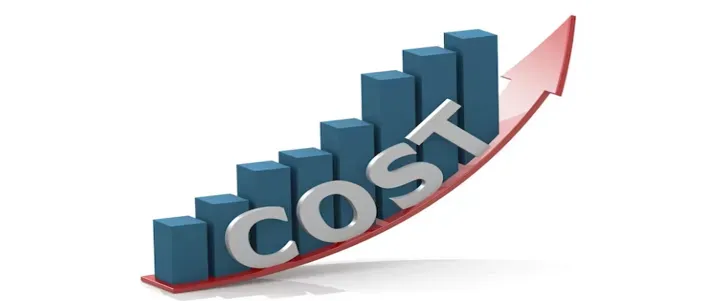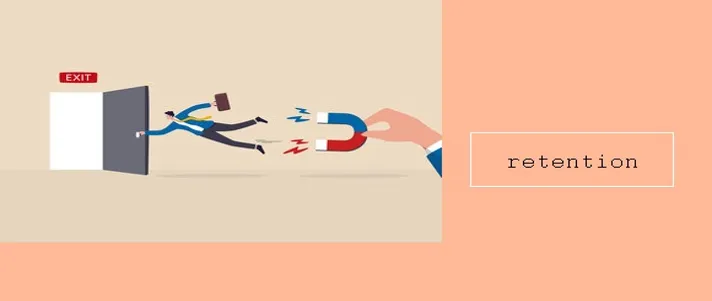SMS Marketing ROI [and How To Boost It]
Marketing in the modern world can often feel like trying to hit a moving target. As trends and technologies evolve, so too do the strategies marketers use to reach their audiences since it had to happen on a bit different platform.
But SMS Marketing has managed to endure. So, let’s explore the impressive return on investment (ROI) it can provide.
Decoding the Return on Investment (ROI) in SMS Marketing
Return on Investment (ROI) is a simple yet powerful metric that allows businesses to measure the effectiveness and profitability of their marketing strategies.
In the context of SMS Marketing, ROI is calculated by assessing the ratio of net profit generated through the campaign to the total cost of running that campaign.
Every savvy business owner is looking for marketing strategies with a high ROI.
However, accurately determining the ROI from an SMS marketing campaign can be, though not out of this world, somewhat complex.
We need to examine several key variables to understand the true value.
These variables include:
- response rates,
- conversion rates,
- customer lifetime value (CLV), and
- cost per acquisition (CPA)
A complete digital marketing glossary can be found here.
Now, let’s take a closer look at these variables.
1. Measuring Response Rates

One of the key factors contributing to the ROI in SMS Marketing is the response rate.
This is the percentage of recipients who take the desired action in response to a text message, such as clicking on a link or rep a text.
Compared to other marketing channels, SMS boasts a remarkable response rate, estimated at 45%.
This is significantly higher than the average of other marketing channels such as email marketing with a response rate of around 6%.
The immediacy and personal nature of text messages especially contribute to these higher response rates.
2. Evaluating Conversion Rates

Next up, we have conversion rates.
While the response rate measures the percentage of receivers who take a desired action, the conversion rates metric signifies the percentage of recipients who complete that desired action, such as making a purchase, after receiving a marketing message.
And with an average of 29%, SMS marketing proves its mettle yet again, with conversion rates that are eight times higher than that of other channels like email marketing which averages around 4%.
Whether it’s convincing customers to redeem a discount code, make a purchase, or RSVP to an event, SMS marketing’s precise and timely nature makes it a potent tool for driving immediate action.
3. Assessing Customer Lifetime Value (CLV)

Lastly, we have the Customer Lifetime Value (CLV).
CLV is a prediction of the net profit attributed to the entire future relationship with a customer.
Regular, personalized communication through SMS marketing can build brand loyalty, leading to more frequent purchases and higher spending over time.
By enhancing the customer’s journey and maintaining an ongoing relationship, SMS marketing can directly increase a customer’s CLV, thereby boosting the overall ROI.
While understanding these factors is crucial, it’s equally important to have the right tools at your disposal.
Choosing the best SMS marketing software can dramatically improve your marketing strategy.
On this platform, we’ve curated a list of the best SMS marketing software available today that can help businesses effectively reach their target audience and enhance their ROI.
4. Cost Per Acquisition (CPA)

Another key factor in evaluating ROI for SMS marketing is to understand the cost per acquisition (CPA), which is the total cost of a campaign divided by the number of new customers acquired through that campaign.
If a campaign reaches thousands of users but results in few actual conversions, then the CPA could be high, which in turn will negatively affect the ROI of such SMS marketing.
It’s crucial to evaluate CPA alongside response rates and conversion rates to get a holistic view of the effectiveness of an SMS marketing campaign.
SMS Marketing, with its higher response rates and conversion rates, usually results in a lower CPA, thus contributing positively to the overall ROI.
…
The strategies discussed above – response rates, conversion rates, customer lifetime value (CLV), cost per acquisition (CPA), segmenting ROI analysis, retaining existing customers, cross-channel performance, and A/B testing – are some of the most common and effective ways to measure ROI on an SMS marketing campaign. However, they are not the only ways.
Here are a few more methods that can be used to measure the ROI of an SMS marketing campaign:
- Revenue Per SMS (RPS): This is a direct measure of how much revenue each text message generates. It can be calculated by dividing the total revenue from an SMS campaign by the number of text messages sent.
- Return on Marketing Investment (ROMI): This is similar to ROI, but it specifically measures the effectiveness of marketing expenditures. By comparing the net revenue from an SMS marketing campaign to the amount spent on that campaign, you can calculate the ROMI.
- Customer Acquisition Cost (CAC): This measures how much it costs to acquire a new customer through an SMS marketing campaign. It can be calculated by dividing the total cost of the campaign by the number of new customers it brings in.
- Customer Retention Rate (CRR): While not directly an ROI metric, it provides insight into the effectiveness of your SMS marketing campaign in keeping your customers. A higher retention rate can indirectly contribute to a higher ROI.
- Average Revenue Per User (ARPU): This metric can help you understand how much revenue each customer is generating on average over a specific period. It’s calculated by dividing the total revenue over that period by the total number of customers.
The key is to select the measures that are most relevant to your specific business objectives and marketing goals.
How To Boost The Return on Investment (ROI) of an SMS Marketing Campaign
Segmenting ROI Analysis: Deepening Customer Understanding

The total ROI from a campaign is important, but deeper insights can be gleaned by segmenting this analysis.
This can be achieved by calculating the ROI of SMS marketing efforts for different customer groups or segments.
By doing so, you can identify which segments are more responsive to SMS marketing and which ones require more tailored efforts to improve their engagement and conversion rates.
For instance, you might find that one segment of your audience responds well to a certain type of promotional text message, while another segment might prefer other informational messages.
Such insights will allow you to personalize and optimize your SMS marketing strategy for different customer segments, leading to improved overall ROI.
ROI from the Retention Perspective

While acquiring new customers is a critical aspect of return on investment in any type of marketing, retaining existing customers should not be overlooked.
Research has shown that it is cheaper to retain an existing customer than it is to acquire a new one.
SMS marketing is a highly effective channel for customer retention.
Personalized messages at the right frequency can be used to engage existing customers, offer them exclusive deals, and make them feel valued.
This engagement can lead to higher customer satisfaction and increased brand loyalty, which can result in repeated business, thus positively impacting the ROI.
Evaluation of Cross-Channel Performance

SMS Marketing doesn’t exist in a vacuum. It often works in conjunction with other marketing channels to influence the customer journey.
Therefore, it’s essential to evaluate the role of SMS marketing within a multi-channel marketing strategy.
For example, you can examine the interplay between SMS and email marketing.
Do customers who receive both emails and text messages from your business have a higher CLV or conversion rate than those who receive only one type of communication?
Understanding how different channels work together to drive customer behavior can provide valuable insights into the overall ROI of your SMS marketing efforts.
ROI Optimization: A/B Testing

To further increase the ROI from SMS marketing, businesses can implement A/B testing.
This involves sending two different versions of a text message to two segments of your audience to see which version generates a better response rate, conversion rate, or other desired outcome.
The data collected from this testing can then be used to refine future marketing messages and strategies, further enhancing ROI.
Bonus: SMS Marketing Vs Email Marketing

A common topic of discussion in digital marketing circles is the comparison between SMS marketing and email marketing.
Both methods have their strengths and potential drawbacks, and their effectiveness can vary depending on the specific goals and target audience of a campaign.
While email marketing has a broader reach and allows for more detailed content, SMS marketing shines in terms of areas such as immediacy, open rates, and response rates.
The shorter, more direct nature of SMS also reduces the risk of messages getting lost in crowded inboxes.
For a more in-depth comparison, take a look at our detailed analysis of SMS marketing vs. Email marketing.
Conclusion
We are moving at breakneck speed on every aspect of technology, and since we are not The Flash it’s easy to overlook the humble text message as a relic of the past.
However, as we’ve explored in this guide, SMS marketing is not just alive, it’s thriving and delivering a spectacular bang for your marketing buck.
So, what’s the magic behind this staying power?
It lies in its simplicity, immediacy, and intimacy. A text message cuts through the digital noise, landing straight into a customer’s pocket, with their attention almost guaranteed.
There’s an undeniable charm in this personal touch, which, coupled with savvy strategies and careful metrics analysis, can make for a marketing masterstroke.
Remember that ROI in SMS marketing isn’t just about raw numbers. It’s about
- forming and sustaining connections,
- about building brand loyalty, and
- delivering value at every touchpoint (I just simply say this word a lot).
From response rates to customer lifetime value, every metric tells a story of engagement, and understanding this narrative is key to making the most of your SMS marketing.
By the way, before I see you at the best SMS marketing software, just wanted to remind you that as marketers, creators, freelancers, businesses, etc, we are all, storytellers.
And there’s no denying the power of a well-crafted, well-timed, personal SMS to tell a compelling tale.
As things continue to change, SMS marketing remains an enduring testament to the power of personal connection in the world of commerce.
Frequently Asked Questions About SMS MARKETING ROI [AND HOW TO BOOST IT]
The ROI of SMS Marketing is typically high due to the low cost of sending text messages and the high open rate of text messages. Studies have shown that businesses typically see a return on investment of 4 to 8 times the amount they invest in SMS marketing.
There are several ways to boost the ROI of SMS Marketing. First, target your message to the right audiences. Make sure you are sending messages to customers who are likely to be interested in your products or services. Second, personalize your messages. Using personalized messages can increase engagement and response rates. Finally, use an automated system to send messages. Automating messages can save time and effort, while also ensuring messages are sent on time.

